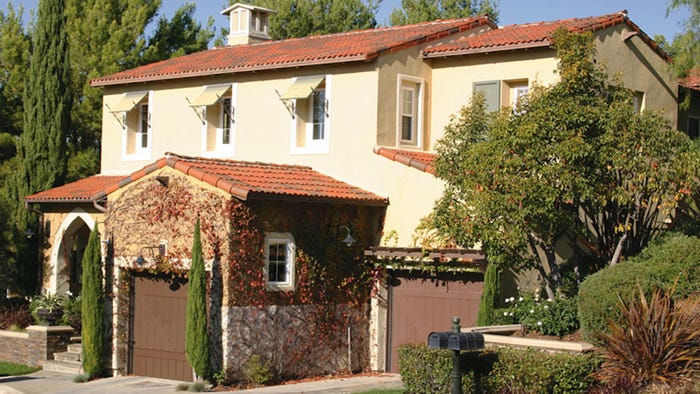Construction and Materials Accelerates Past a Slowing Economy
There is no doubt the economy has slowed, but is a bad recession in the headlights? There are segments of the economy that are, in fact, suffering contractions, but what does that mean for the materials and construction industry?

There are entirely too many Chicken Littles out there when it comes to opinions on the economy, with far too many pundits expressing concern that we are heading to a pandemic-induced recession.
The thinking goes like this: Stimulus legislation passed by Congress that put trillions of dollars into the pockets of consumers and businesses through the American Rescue Plan, as well as the boon for businesses large and small, the ubiquitous “PPP,” all pumped entirely too much liquidity into our system. This created excessive demand on goods (not services, because of the pandemic lockdowns and quarantines), exacerbating supply-chain issues because people were not at work to manufacture those goods. Long supply-chain disruptions occurred, and our economic system responded with historic accuracy as in every other previous cycle of excess demand over supply: Prices went up and inflation reared its ugly head.
So, just as we have seen in so many inflationary cycles in the past, the Fed raised interest rates, the stock market tanked, and consumer sentiment fell off a cliff. Remember, American consumers represent 70% of the nation’s Gross Domestic Product (GDP), so, when they lock up their wallets, it can have a huge impact on the economy. The locking up occurs when they see the giant billboard of black numbers at the gas pump that hits them right between the eyes when prices spike, coupled with a grocery bill that is 15-30% higher than it was two years ago, depending on the mix of items on the checkout belt. So, what happens? That trip to Disney World gets canceled because there isn’t enough money to go around. That is what is happening today.
Is it all bad news?
Look, there is no doubt the economy has slowed, but is a bad recession in the headlights? I don’t think so. Yes, GDP shrank 1.6% in the first quarter of the year, followed by 0.9% in the second quarter. But, particularly in the second quarter, the contraction is easily within the margin of error, and corrected figures in October could easily point to a GDP that was flat or even slightly up. And, at 3.6% unemployment, a real recession is unlikely.
There are segments of the economy that are, in fact, suffering contractions. After all the stimulus money, how can consumers keep up the pace of buying goods? As a result, retail spending, particularly at brick-and-mortar locations, is down, and headlines point to sales contractions and layoffs at Bed, Bath & Beyond, Walmart, Amazon and other high-profile retailers. So, retail is clearly a drag on GDP. But elsewhere, things are stable, and one segment shines as an example of a robust economic segment that is actually expanding: construction.
Construction continues to see growth
Dodge Construction Network recently reported that total construction starts rose 48% in July to a seasonally adjusted annual rate of $1.36 trillion. This gain results from the start of three large manufacturing plants and two LNG export facilities. However, even without these projects, total construction starts still would have increased 7%. Nonresidential building starts rose 79% in July, and nonbuilding starts jumped 120%. Conversely, residential starts decreased 8%.
Additionally, total construction was 11% higher in the first seven months of 2022 compared to the same period of 2021. Nonresidential building starts rose 22% over the year, residential starts were 1% higher and nonbuilding starts were up 16%. For the 12 months ending July 2022, total construction starts were 10% above the 12 months ending July 2021. Nonresidential starts were 21% higher, residential starts gained 4% and nonbuilding starts were up 10%. “Mega-projects aside, construction continues to improve despite the pressure created by higher interest rates and labor scarcity,” said Richard Branch, chief economist for Dodge Construction Network. “Combined with the strong labor market, this is another indicator that the U.S. is not currently in a recession.”
With the giant safety net of the $1.2 trillion infrastructure act stretching tightly under the construction economy, don’t expect to see a slowdown in construction materials anytime in the foreseeable future.
About Pierre G. Villere
Pierre G. Villere is president and senior managing partner of Allen-Villere Partners, an investment banking firm with a national practice in the construction materials industry that specializes in mergers and acquisitions. He has a career spanning almost five decades and volunteers his time to educating the industry as a regular columnist in various publications and through presentations at numerous industry events. Contact Villere via email or follow him on Twitter: @allenvillere.
About the Author(s)
You May Also Like




